Heard but seldom seen
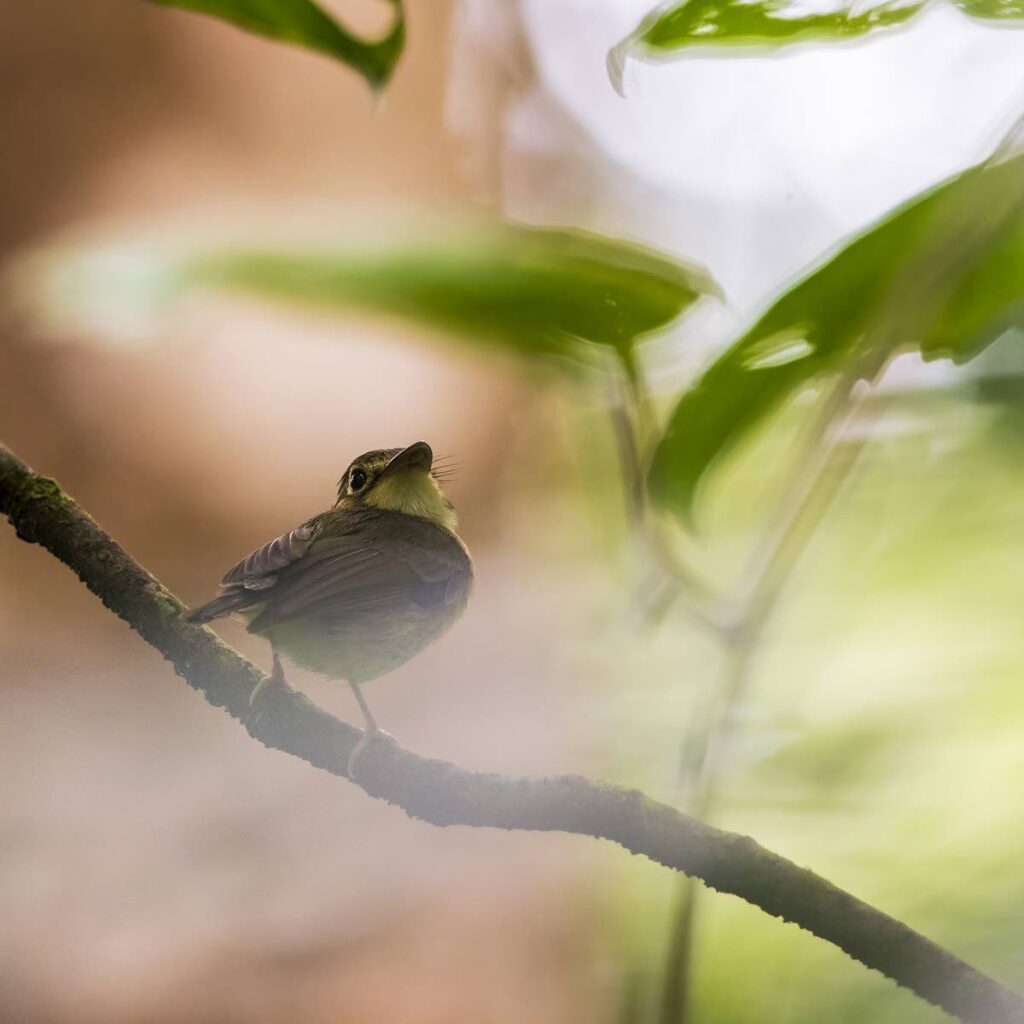
Faraaz Abdool asks us to sharpen our other senses as we walk in the rainforest. When we least expect it, we may be lucky to hear, and maybe see, these birds that are good at hiding.
Wherever we are on the planet, the probability of seeing a bird is always high. On an island as compact as Tobago, it is impossible to escape them! Yet, there are several species that exist alongside those we are accustomed to that are rarely encountered. This is most apparent in wild areas such as the Main Ridge Forest Reserve. Here, there is ample space, a network of undulating hills covered in untamed forest for all forms of feathered friends to proliferate.
Within a habitat such as this, a variety of factors can contribute to the bird being infrequently seen. Perhaps it feeds on a low-density food and thus requires considerable territory from which it can subsist.
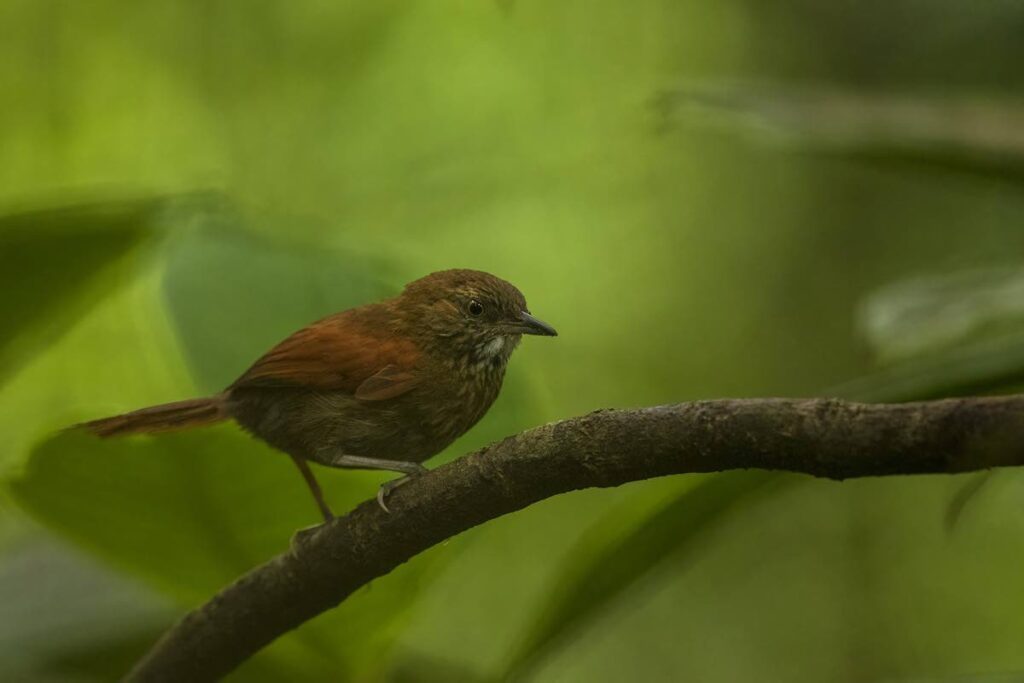
In that case it is purely up to luck and chance for the human observer to cross paths with this species.
They can also typically be solitary and only during certain periods of the year – such as during the breeding or nesting season – they may be seen in pairs. Others are cryptic in coloration and designed to seamlessly blend in with their surroundings. Vegetation also plays an important role in keeping some species hidden.
In the eyes of a human observer or a potential predator, many birds are snack-sized and prudently opt to remain out of view. Even very vocal species may be hard-pressed to leave the comfort and safety of a woody bramble. The melodious song of the Rufous-breasted Wren, for instance, is one of the most common features of the soundscape of the Main Ridge Forest Reserve yet only the most fortuitous of circumstances allows us to behold its striking black-and-white checkered face and brilliant rufescent breast.
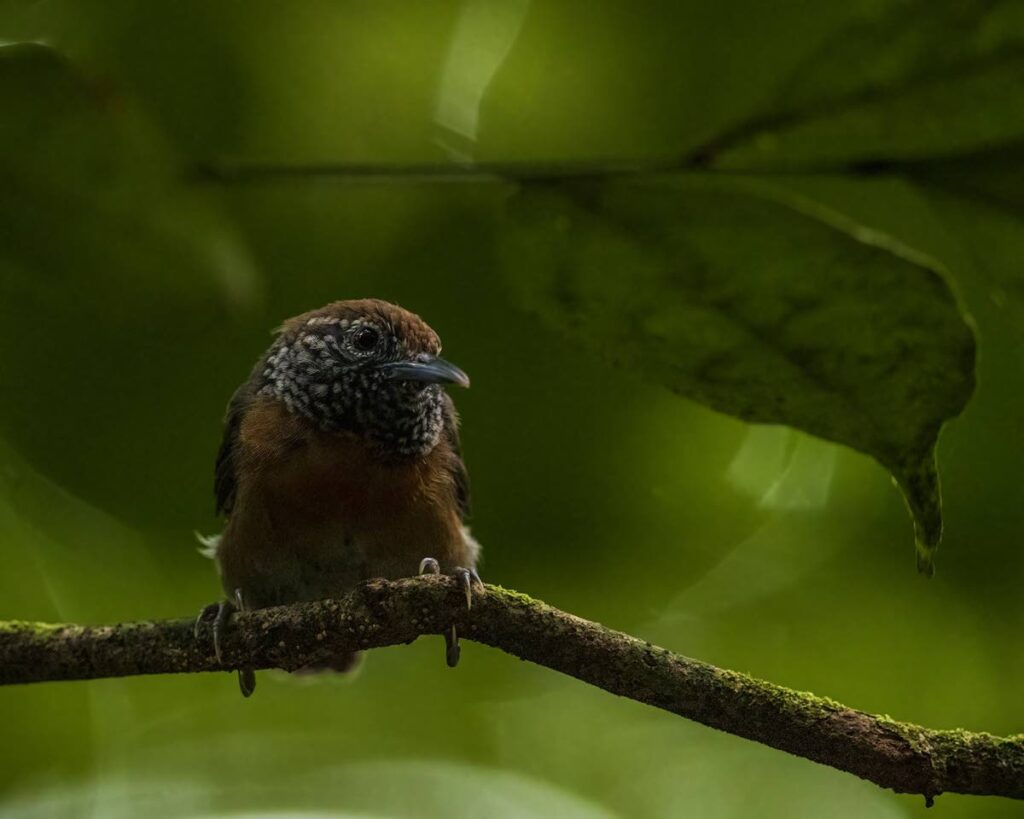
Less melodic but just as furtive is the Plain Antvireo. Most often found in pairs, this species exhibits sexual dimorphism – meaning that males and females differ in coloration.
Like the Rufous-breasted Wren, it frequently vocalises as it forages. Its song is a curious sounding, descending series of staccato notes, the pattern of which might mirror that of a bouncing ball gradually coming to rest.
Despite its superficially drab appearance, the Grey-throated Leaftosser’s strident vocalisation of two to four cheerful, ascending notes always injects a sense of excitement. Found across an exceptionally wide range, mostly in dense forest on the foothills of the Andes in South America, this bird is most often encountered singly. As its name implies, the Grey-throated Leaftosser does in fact toss leaves. This is not a frivolous habit, but its main technique to find food hidden within the leaf litter. All manners of spiders, centipedes, cockroaches, beetles, and even tiny frogs are suddenly exposed when the leaf they used to conceal themselves suddenly rockets into the sky. Since this species depends wholly on the existence of the leaf litter ecosystem present within pristine forest, it is extremely sensitive to any kind of disturbance. Consequently, habitat loss and fragmentation remain its most present threats, and its conservation status has been listed as Near Threatened as a result.
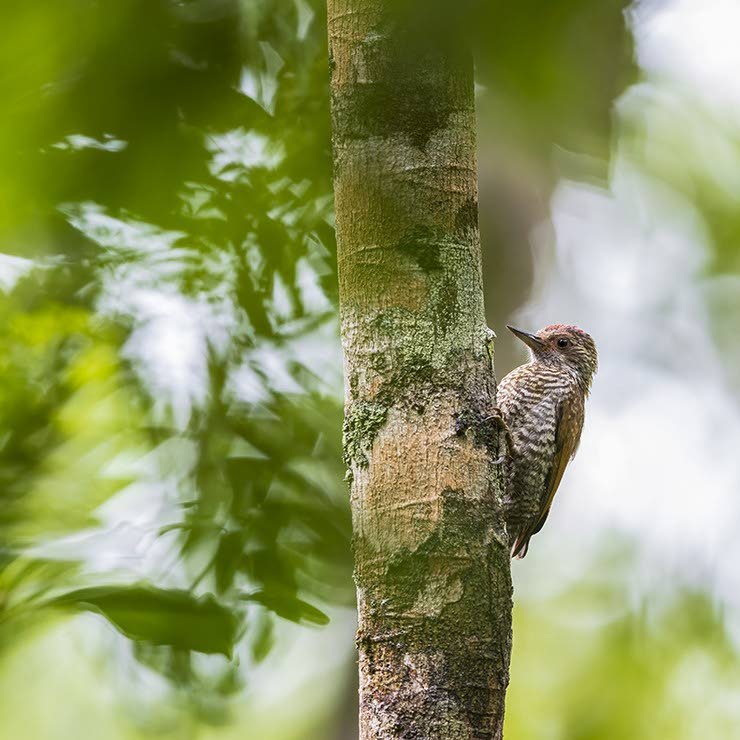
- Faraaz Abdool
Monitoring the leaf litter as well as the vegetation just above it is the very similar but unrelated Stripe-breasted Spinetail. Often preying on the same creatures as the leaftosser, the spinetail employs a distinct method. With sharp eyes always on the lookout, it makes short, quick, and direct flights to its target, gleaning its meals from the forest floor as well as foliage and branches approximately 2m off the ground. Interestingly, Stripe-breasted Spinetails on Tobago differ from those on Trinidad, so much so that each island has its own endemic subspecies! On both islands however, Stripe-breasted Spinetails build enormous and elaborate nests, complete with stylish, curved entrance tunnels.
The habits of the White-throated Spadebill contribute more to its inconspicuous nature than its plumage. This tiny flycatcher spends considerable time sitting still, its large eyes alert for any movement on and just above the forest floor. Its flight is swift and direct, and is often preceded by a short, sharp squeak.
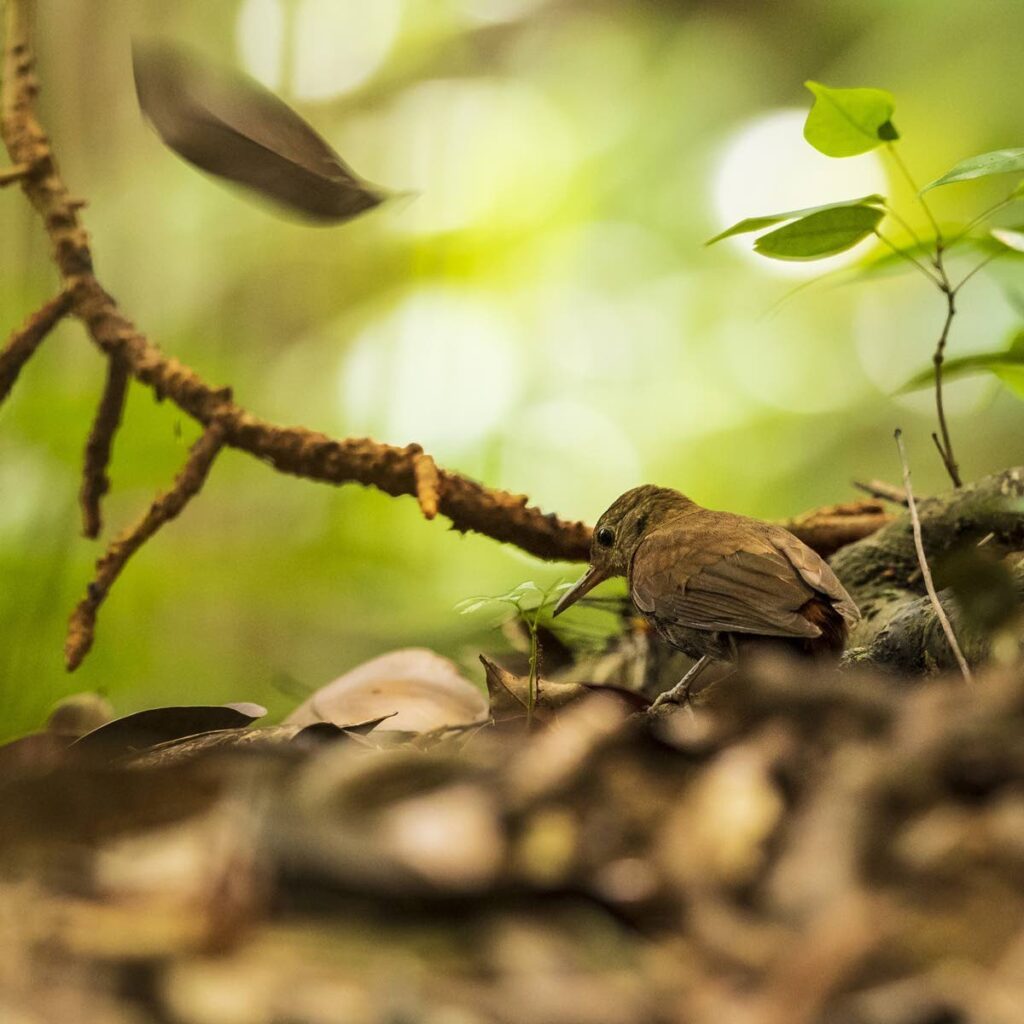
Tobago has three species each of woodpeckers and woodcreepers, unrelated families that share several traits. Both are birds that cling to trunks, boughs, and twigs using their stiff tails as support; both families depend heavily on arthropods for sustenance. Woodcreepers are as a rule much slighter in build than the robust woodpeckers. Lacking the physiological adaptations that enable woodpeckers to use their heads as battering rams, woodcreepers use deft touches and stealth to capture their prey. Of the three woodcreepers, the diminutive Olivaceous Woodcreeper is incredibly easy to overlook. Half russet and half dirty olive, it melts easily into the backdrop of thick, moss-laden trunks. Even if it is detected, its method of locomotion can mislead the onlooker into thinking it is a small mouse!
The smallest of the three woodpeckers found on Tobago is the inconspicuous Red-rumped Woodpecker. Its namesake characteristic is most often hidden beneath folded brownish-olive wings, but is visible once the bird takes flight. Although they can and often do hammer dead and decaying branches to access wood-boring beetles within, they frequently forage for insects on the surface of wood and among thick foliage.
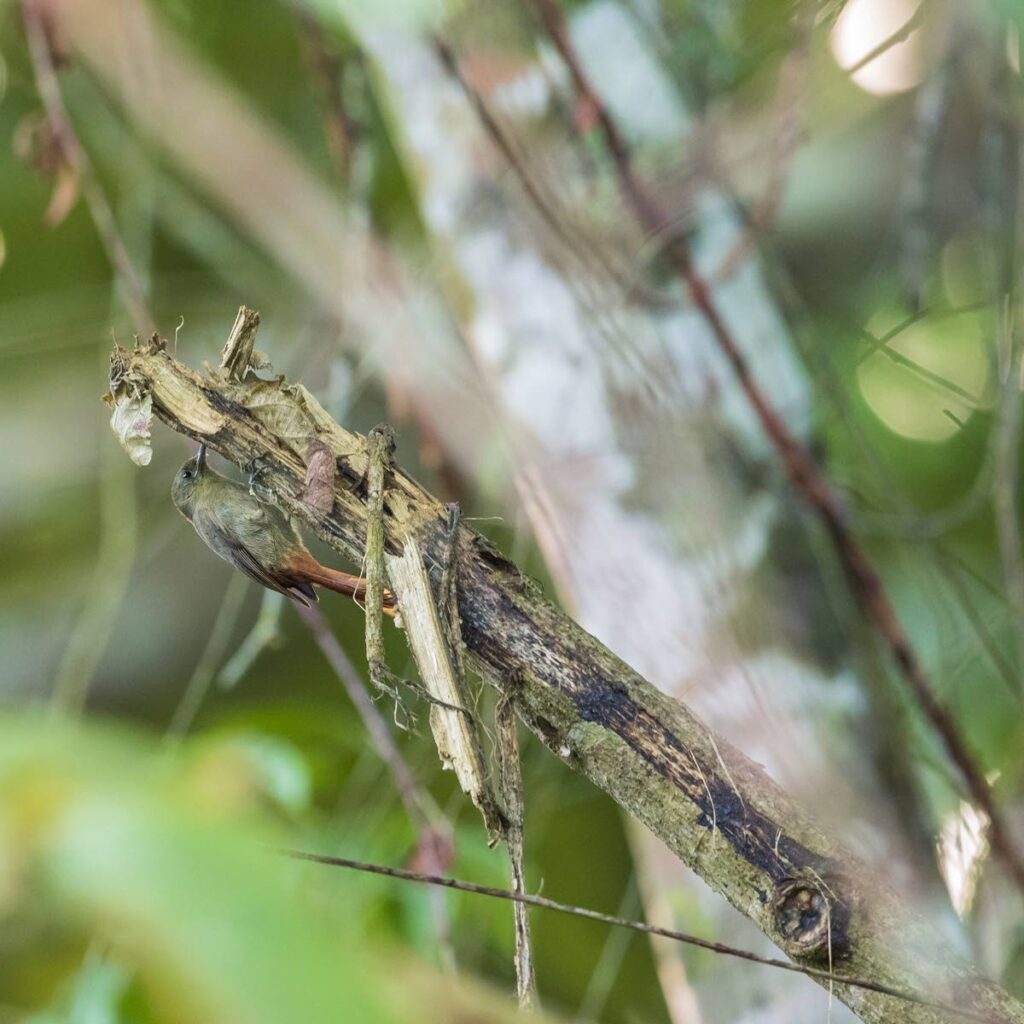
They may not be creatures of superlatives or possess dazzling colours, but these infrequently encountered birds imbued with the richest of browns, oranges, and reds are irreplaceable members of the biome within the Main Ridge Forest Reserve. Tethered to them are networks of underappreciated creatures, many of which are responsible for the decomposition of fallen leaves, limbs, and entire trees that in turn, nourishes the very heart of the rainforest.
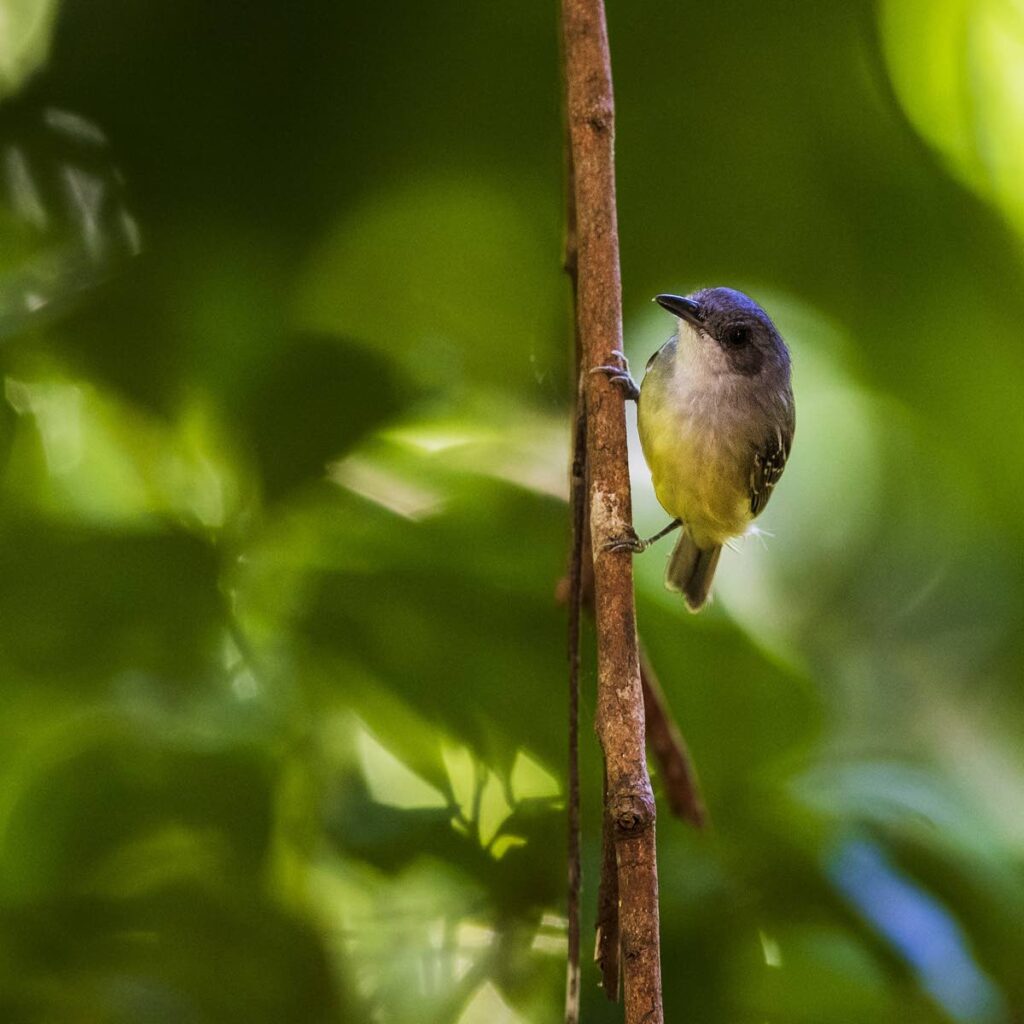
In nature, there are no absolutes save for the fact that absolutely nothing is guaranteed. A walk in the forest can involve chance encounters with common and uncommon species, a unique cast of characters every time. This constant novelty is one of the greatest lessons that can be gleaned from time spent in nature. It is a reminder to take nothing for granted.


Comments
"Heard but seldom seen"